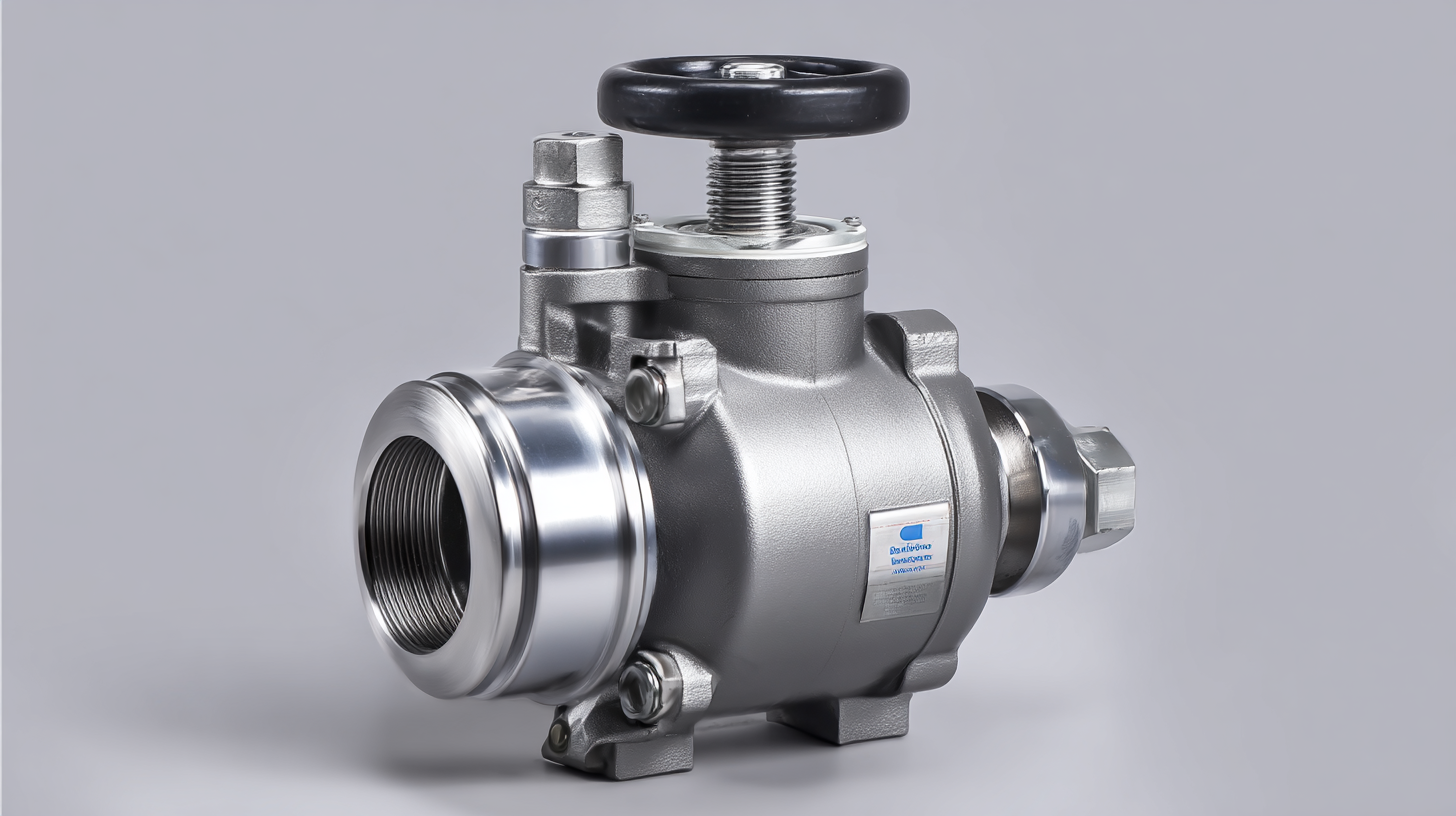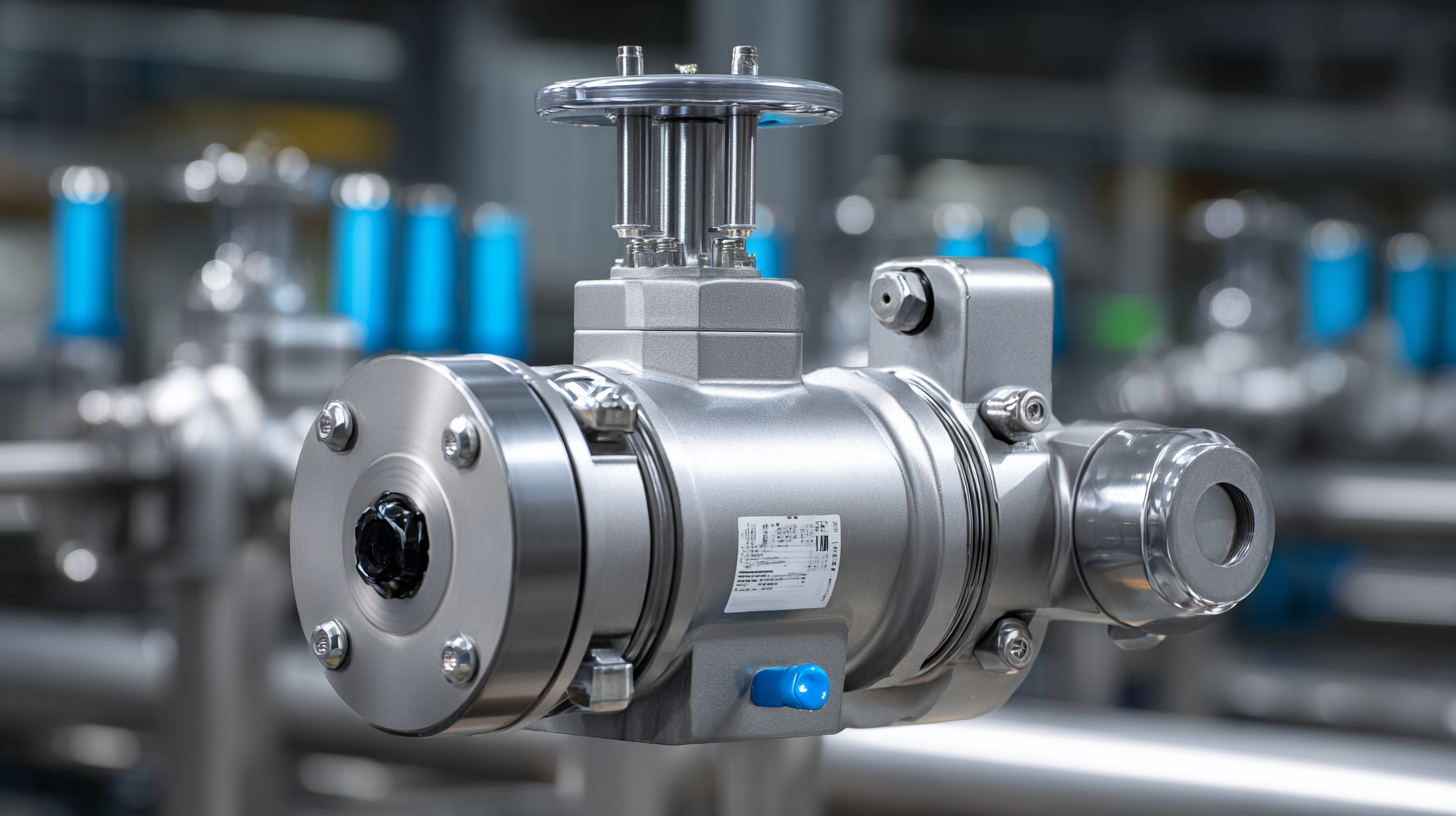In today's competitive landscape, the demand for high-quality industrial components has led to a surge in the market for locking ball valves, particularly those sourced from China. According to a recent report by MarketsandMarkets, the global valve market is projected to reach $83.4 billion by 2025, with locking ball valves playing a crucial role in various sectors such as oil and gas, water treatment, and chemical processing. This growth is driven not only by the increasing need for efficient fluid control solutions but also by China’s advancements in manufacturing technology and quality assurance practices. By leveraging innovative design and rigorous testing protocols, Chinese manufacturers are setting new standards that transcend borders, ensuring reliability and performance in diverse applications. As businesses seek to unlock global markets, understanding the advantages of sourcing locking ball valves from China becomes key to driving quality and innovation across industries.

Understanding the complexities of import and export certification for locking ball valves is essential for manufacturers and traders aiming to unlock global markets. According to a recent report by MarketsandMarkets, the global ball valve market is projected to reach USD 13.45 billion by 2025, growing at a CAGR of 6.0%. This growth underscores the increasing demand for high-quality valves, but navigating the certification process can be challenging. It's crucial to understand ISO standards, regional compliance requirements, and the role of third-party testing agencies in ensuring product safety and performance.
Tips: Ensure your locking ball valves meet the necessary international certifications, such as ISO 9001 and API 608. Engaging a knowledgeable consultant can help streamline the certification process and avoid costly delays.
Additionally, understanding the specific import regulations of target countries is vital. In the U.S., for instance, the FDA provides guidelines for products that may directly or indirectly impact public health. Non-compliance can lead to significant penalties or market access denial.
Tips: Regular training sessions for your team on regulatory standards can greatly enhance compliance and reduce risks associated with international trade.

When it comes to industrial applications, the quality of valves plays a critical role in ensuring efficiency and safety.
High-quality locking ball valves from China stand out in the global market due to their innovative design and robust construction. One of the key features of these valves is their superior sealing performance, which minimizes the risk of leaks and ensures reliable operation under various pressure and temperature conditions. The materials used in manufacturing, such as high-grade stainless steel and durable plastics, contribute to their longevity and resistance to wear, making them an excellent investment for businesses.
Another notable aspect is the versatility of these locking ball valves. They come in a range of sizes and configurations, suitable for a variety of applications—from water treatment facilities to chemical processing plants. The incorporation of advanced technology in the manufacturing process allows for precise control and ease of maintenance, which is essential for minimizing downtime in operations. Furthermore, stringent quality control measures implemented during production ensure that each valve meets international standards, thereby supporting global industries with reliable solutions that withstand the test of time.
The locking ball valve industry is on the brink of transformation, propelled by innovative manufacturing techniques that are redefining quality and performance. Recent advancements emphasize the integration of cutting-edge technology that enhances functionality and user experience. For instance, the emergence of twist-to-lock mechanisms in aerosol systems showcases how precision engineering can elevate product safety and reliability. Such innovations not only improve operational efficiency but also align with global standards, enabling manufacturers to cater to diverse markets effectively.

In China, the focus on embracing modern manufacturing processes has enabled the production of locking ball valves that meet and exceed international quality benchmarks. Through a commitment to research and development, Chinese manufacturers are unlocking new possibilities in valve design and functionality, emphasizing durability and ease of use. This shift towards innovative practices not only enhances the competitiveness of Chinese products in the global market but also fosters a spirit of collaboration that transcends borders, uniting industries in a shared vision for excellence in product development and customer satisfaction.
Navigating global markets can be a complex yet rewarding endeavor, particularly for manufacturers like those producing locking ball valves in China. To successfully export your products, it is crucial to understand the unique requirements of different regions. Each market comes with its own regulatory standards and preferences, making market research a vital first step. Businesses should invest time in understanding local customs, laws, and procurement practices to tailor their approach accordingly.
**Tip:** Establish partnerships with local distributors who possess insider knowledge and established networks. They can provide valuable insights into consumer behavior and help navigate legal complexities, making your entry into the market smoother.
Moreover, embracing innovation is key to standing out in competitive landscapes. Developing high-quality products that incorporate the latest technology can make your offerings more appealing to international buyers. Continuously seek feedback and engage with customers to drive product enhancement.
**Tip:** Attend global trade shows to showcase your innovations and connect directly with potential buyers. These events not only facilitate networking but also provide a platform to stay ahead of industry trends, enabling you to better cater to the demands of the global market.
When it comes to the production of locking ball valves, quality assurance is paramount to ensure reliable performance and durability in various applications. A well-structured quality assurance program involves multiple stages, starting from the selection of raw materials to the final inspection of the manufactured product. Implementing stringent material checks allows manufacturers to source only the best raw materials that meet industry standards, thus enhancing the overall quality of the valves produced.
Additionally, adopting modern testing methods is essential for evaluating the performance of locking ball valves. Through the use of advanced technology, manufacturers can conduct pressure tests, leakage tests, and operational simulations to ensure that each valve functions correctly under various conditions. Regular audits and compliance checks not only help maintain standards but also foster a culture of continuous improvement, pushing manufacturers to innovate and evolve their production processes. Ultimately, these quality assurance practices not only drive excellence in locking ball valve production but also enable companies to confidently enter and compete in global markets.
| Specification | Material | Size (inches) | Pressure Rating (PSI) | Testing Standard | Lead Time (weeks) |
|---|---|---|---|---|---|
| Locking Ball Valve A | Stainless Steel 304 | 1" | 150 | API 598 | 4 |
| Locking Ball Valve B | Brass | 2" | 200 | ASTM B16.34 | 6 |
| Locking Ball Valve C | Carbon Steel | 3" | 300 | ISO 5211 | 5 |
| Locking Ball Valve D | PVC | 1.5" | 150 | ASTM D2467 | 3 |



Same Day Shipping
ISO Certified Production